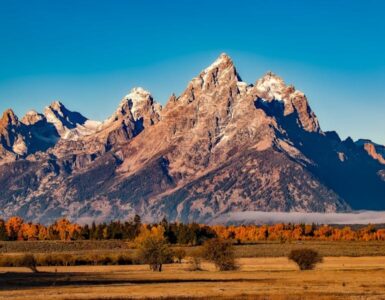After several months of public comment, the Environmental Protection Agency (EPA) repealed a rule that critics said was so far reaching, it gave federal regulators legal oversight over “puddles and ditches” on private property.
Repeal of the rule now ends that “overreach,” EPA Administrator Andrew Wheeler said after signing the repeal during an event at the National Association of Manufacturers headquarters in Washington, D.C.
The action ends an “egregious power grab” by the government, said Wheeler, who spoke alongside Assistant Secretary of the Army for Civil Works R.D. James, who also signed the repeal Sept. 12.
Now, the rule reverts to its previous state, which provides clarity and consistency so that the regulated community can easily understand where the Clean Water Act applies, Wheeler said.
Business leaders and lawmakers heralded the rollback as a victory for landowners everywhere, saying it will remove jurisdictional confusion and federal reach over small bodies of water in the states.
“The WOTUS Rule gave Washington bureaucrats the power to unnecessarily regulate every stream, creek, and ditch across the country – without actually improving water quality,” said Arizona’s U.S. Senator Martha McSally, who worked to get the rule change.
Protecting water and economic development
President Donald Trump first ordered a review of the WOTUS in 2017. At the time, he said that while it is in the national interest to ensure that the country’s navigable waters are protected from pollution, the policy also must promote economic growth, reduce regulatory red tape, and not overstep states’ authority.
Now, the rule reverts to its original text. Federal jurisdiction will remain over traditional navigable waters, tributaries to those waters, certain ditches, certain lakes and ponds, impoundments of jurisdictional waters, and wetlands adjacent to jurisdictional waters.
Waters that are not under federal regulation in the revised rule are features that only contain water during or in response to rainfall and other “ephemeral” features, groundwater, many ditches, including most roadside or farm ditches, prior converted cropland, stormwater control features, and waste treatment systems.
Long time coming
Landowners and government officials across Arizona and the nation have complained that the 2015 rule change was overly bureaucratic and costly. Thirty one states filed complaints and petitions for rule rollback. Since it was published in the Federal Register in February, the EPA’s proposal to revise the definition of WOTUS drew more than 11,400 comments.
For Arizona landowners, the repeal is particularly relevant. Ninety-four percent of all bodies of water in Arizona are ephemeral or intermittent (i.e. seasonal waters), according to the state officials.
The definition was so vague, landowners were uncertain when legal advice was needed to determine whether a body of water on their property was classified as protected, industry leaders said. Those who submitted comments from Arizona, including the heads of seven state agencies, said it was costly as well.
“We look at this through the lens at managing a significant amount of land in the state that has potential for development. If it is hindered by a regulatory overlay, you strip the value out of that asset,” Lisa Atkins, Arizona’s Land Commissioner told CBN earlier this year.
The victory is still not complete though. The rule change has already triggered court challenges from states and environmental groups that oppose the rollback.
To read more reaction from federal and industry leaders, go to: defining WOTUS.
















Add comment